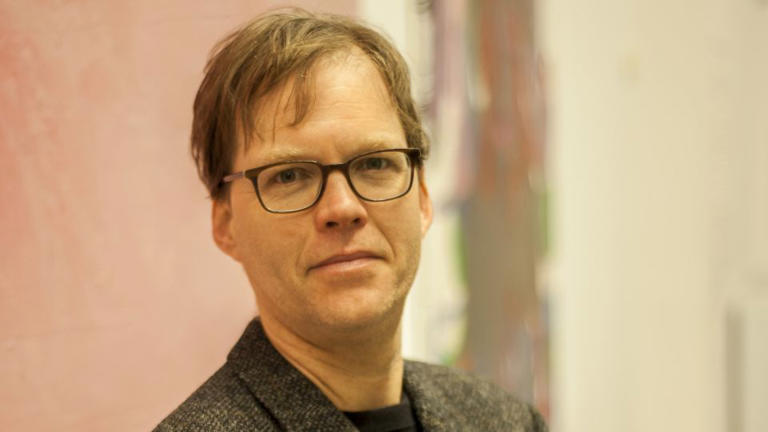Germany’s exit from nuclear power on April 15 doesn’t single it out as a quirky anomaly or black sheep in a world otherwise enthusiastically embracing nuclear energy.
CNN Germany closes the last of its nuclear plants, but opinions divided over future of energy policies Duration 5:30 View on Watch

Paul Hockenos - Hayyan Al-Yousouf
Rather, it situates Germany firmly within the global mainstream: ever more countries are abandoning or scaling back their nuclear power programs, including the US.
Since a highpoint in the early 2000s, the number of operational nuclear reactors worldwide has fallen – from 438 to 411, according to this year’s World Nuclear Industry Status Report. (And that was before Germany’s move this week).
Nuclear power’s share of global electricity generation has now slid to its lowest point in four decades. While at the same time, renewable energy generation – clean tech like solar, wind, bioenergy and geothermal – has expanded by more than 30-fold.
Despite bipartisan backing, the US, the globe’s nuclear energy stronghold, has 12 fewer reactors operational than a decade ago – and none at all under construction.
In fact, when matched up against renewables as a source of energy that doesn’t emit carbon, nuclear power falls egregiously short.
It is so expensive and grievously slow to roll out that its steady decline is no wonder – even if there’s currently the illusion of nuclear’s comeback as a solution for the climate crisis.
Nuclear power may look like an attractive, big bazooka fix to rising emissions. But it is a red herring and the so-called renaissance is nothing but a soap bubble. Nuclear power actually obstructs the transition to a carbon-neutral world. It robs the urgent rollout of clean tech funds, obscures planning clarity and throws a spanner in energy systems driven increasingly by renewables.
In terms of price, nuclear power is itself a striking anomaly in the world of technology, as cost has risen over the course of time rather than sunk.
Since 2011, the price of a kilowatt of nuclear generated electricity has soared by 40%.
Meanwhile solar energy, which the International Energy Agency calls “the cheapest electricity in history,” has plummeted by 90% – and is still falling as its technical efficacy steadily improves.
The cost of a megawatt-hour generated by utility-scale solar or wind is around $38; the same from a nuclear plant runs around $167. Why invest four dollars in a unit of energy when get you the same for one?
The high price tag on nuclear kilowatts is a result of the exorbitant construction bill and insurance costs. The tab is so high that countries simply can’t attract investors no matter how sweet they make the deal.
The two reactors that will go online this year in the US state of Georgia racked up costs of more than $30 billon. But the Hinkley C plant in the UK takes the dubious prize of the priciest: currently $32 billion.
As for rollout time – critically important as the planet is racing against the clock to stop global warming – nuclear also occupies the doghouse. While authoritarian states such as China start up plants more quickly – though not nearly as quickly as they throw up giant wind and solar farms – in the West construction time is almost always vastly underestimated. Supposedly about ten years, though usually much longer.
Since 2000 only one new European reactor has gone online, and in the US the first to be built in more than three decades began operations in Georgia this year. Of the 63 reactors that commenced construction globally between 2012 and 2021, only 19 are operational – and almost all of them in China.
This also means that the world’s current nuclear fleet is aging – average age 31 years. And as France’s disastrous summer of 2022 taught us (half of its reactors were down for repairs) old nuclear technology is unreliable – anything but the 24/7 phenomenon that advocates claim.
None of these numbers or arguments, however, should obscure the original reason that Germany, as well fellow European countries Spain and Switzerland, chose to toss in nuclear power, to say nothing of many of the 163 countries that never went the way of spitting atoms for energy in the first place.
Nuclear fission remains an extremely dangerous and toxic means of energy generation. In addition to the meltdowns in Chernobyl, Ukraine (1986) and Fukushima, Japan (2011), according to the IAEA, there have been 31 serious incidents at nuclear power stations worldwide since 1952— including two in France and six in the United States.
Most recently, in November 2022 the Monticello Nuclear Generating Plant north of Minneapolis, Minnesota, leaked about 400,000 gallons of radioactive water into a nearby stream.
And nuclear waste remains a radioactive dilemma without a solution. There are currently more than 250,000 tonnes of spent fuel sitting on or near nuclear plant sites – waiting for permanent repository sites to be named and constructed. The problem since 1954: nobody but nobody wants it stored near their communities or water supplies.
Germany, and all of Europe, is building out renewable energy, smart grids, electric vehicles and energy storage facilities at breakneck pace to eliminate fossil fuels from its energy supply.
This is a clear-headed, evidence-based decision in contrast to the pipedream of a nuclear future.
For more CNN news and newsletters create an account at CNN.com
No comments:
Post a Comment